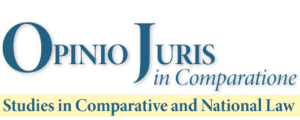SELECTED CONFERENCE PROCEEDINGS
Violazione del Diritto d'Autore nel Cloud Computing: Analisi del Modello di Enforcement Europeo e Applicabilità delle Safe-Harbours al Cloud Provider - Conference "Getting around the cloud(s) - Technical and legal issues on Cloud services”
Authors: Giuseppe Di Vetta
ABSTRACT
The aim of this essay is to look into the hypothesis of copyright infringement by service providers (cloud providers) in Cloud computing systems. The starting point will be a brief recognition of the essential characteristics of this new technology: interoperability, interactivity and the high level of control the cloud provider is able to exert on the information flux processed in the cloud. In particular, the high level of control the provider is technically able to exert on the information flux is due to the owner’s concentration of Cloud Computing technological assets. This can be considered a centralised system, characterised by a hyerarchical organisation of technological and economic infrastructure. For this reason, Cloud computing must be differentiate from peer to peer systems, as these are less controlled by service providers both on the information flux and on the copyright infringement the final users make through the activity of file- sharing.
The Author points out how the Cloud computing centralised management model cannot but influence the profiles of cloud provider secondary liability, if a copyright infringement by the final user occurs. The Author proposes a recognition of new copyright enforcement tools created by member states of the European Union: in this sense the prevailing recourse to injunctive relief – chiefly in Germany- and the development of copyright enforcement public models are analysed . These provide the creation of independent administrative authorities, enforced with wide and perceptive sanctionatory powers like the French Loi Hadopi and the three strikes policy adopted in European circle.
The analysis of legislation and case law shows that the ISP secondary liability European model is based on the efficacy of safe harbours and on the application of the net neutrality principle. The Author points out the difficult problem of the possibility to subsume cloud providers in the hosting provider subjective category (art.14, Dir. 2000/31/CE), to whom the safe-harbours system can be applied. If related
with the new Web 2.0 intermediaries – including cloud providers- the hosting provider prescriptive definition is completely anachronistic, so that the secondary liability exclusion system cannot be applied to a Cloud computing intermediary. Finally, it is clear that the cloud provider figure causes the crisis of the traditional difference between content provider and passive intermediary, on which the safe- harbours system is based. This situation requires an updating of article 14, Dir. “E-Commerce”. The domestic law of European Union member states, analyzed in this paper, suggests the configuration of a new category of intermediaries (“atypical hosting”) thanks to the use of presumptive elements ( advertising campaign from cloud providers, intermediary’s financial interest). In this way the law rules out the cloud provider passive role, taking into consideration the economic exploitation connected to the storage activity as actual or constructive knowledge. As a result, it is easy to notice a strong tendency to objectification of internet service providers responsibility system, with reference to Web 2.0 new intermediaries.
The Author, at the end of the case-law analysis, proposes for a new intervention by the European lawmaker that, by modifying the art. 14, Dir. E-Commerce, carries out an effective updating of the net neutrality principle in European circle.
Keywords: cloud computing - ISPs secondary liability - copyright infringement - cloud provider - net neutrality principle - safe harbours - hosting provider

